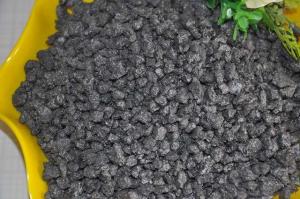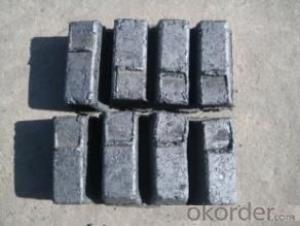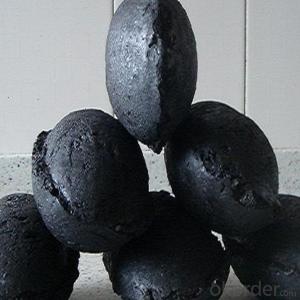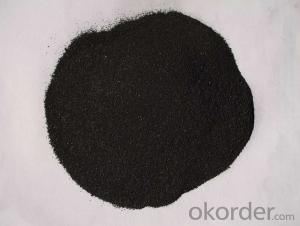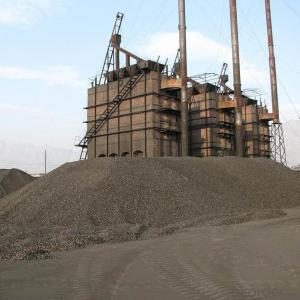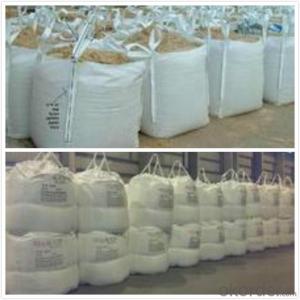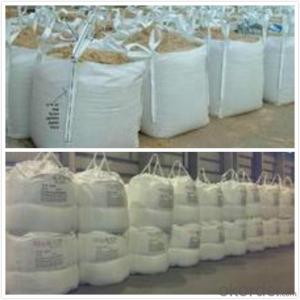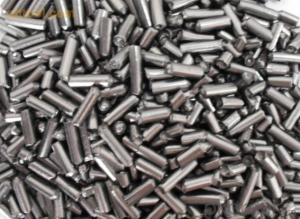Carbon Additve Carbon Coke for Steelmaking
- Loading Port:
- Tianjin
- Payment Terms:
- TT or LC
- Min Order Qty:
- 20 m.t.
- Supply Capability:
- 10000 m.t./month
OKorder Service Pledge
OKorder Financial Service
You Might Also Like
Quick Details
Place of Origin: Ningxia, China (Mainland)
Application: steel making
Shape: granule
Dimensions: FC90-95%
Product Type: Carbon Additive
C Content (%): 90-95% MIN
Working Temperature: -
S Content (%): 0.5%MAX
N Content (%): -
H Content (%): 0.6%MAX
Ash Content (%): 8.5%MAX
Volatile: 2%MAX
ADVANTAGE: low ash & sulfur
COLOR: Black
RAW MATERIAL: TaiXi anthracite
Packaging & Delivery
| Packaging Details: | In 1MT plastic woven bag. |
|---|---|
| Delivery Detail: | 30-40DAYS |
Specifications Carbon Additve Carbon Coke for Steelmaking Carbon Additve low Ash,S,P Structure Carbon Additve Carbon Coke for Steelmaking Shape: granule Dimensions: FC90-95% Product Type: Carbon Additive C Content (%): 90-95% MIN Working Temperature: - S Content (%): 0.5%MAX N Content (%): - H Content (%): 0.6%MAX Ash Content (%): 8.5%MAX Volatile: 2%MAX ADVANTAGE: low ash & sulfur COLOR: Black RAW MATERIAL: TaiXi anthracite Feature Carbon Additve Carbon Coke for Steelmaking Specifications (%): Grade F.C Ash V.M Moisture S Size CR-95 ≥95 <4 <1 <1 <0.3 0-30mm CR-94 ≥94 <4 <1 <1 <0.3 CR-93 ≥93 <6 <1 <1 <0.4 CR-92 ≥92 <7 <1 <1 <0.4 CR-91 ≥91 <8 <1 <1 <0.4 CR-90 ≥90 <8.5 <1.5 <2 <0.4 Image Carbon Additve Carbon Coke for Steelmaking FAQ: Carbon Additve Carbon Coke for Steelmaking Why we adopt carbon additive? Carbon Additives used as additive in steel making process. It made from well-selected Tai Xi anthracite which is low in content of ash, sulphur, phosphorus, high heat productivity, high chemically activation. Mainly industry property of it is: instead of traditional pertroleum coal of Carbon Additives, reduce the cost of steelmaking. Advantage: Carbon Additve Carbon Coke for Steelmaking 1.High quality and competitive price. 2.Timely delivery. 3.If any item you like. Please contact us. Your sincere inquiries are typically answered within 24 hours.
FC>95% ASH<4% S<0.3%
It is made from TaiXi anthracite.
instead of pertrol coke reduce the cost
As buyer's request.
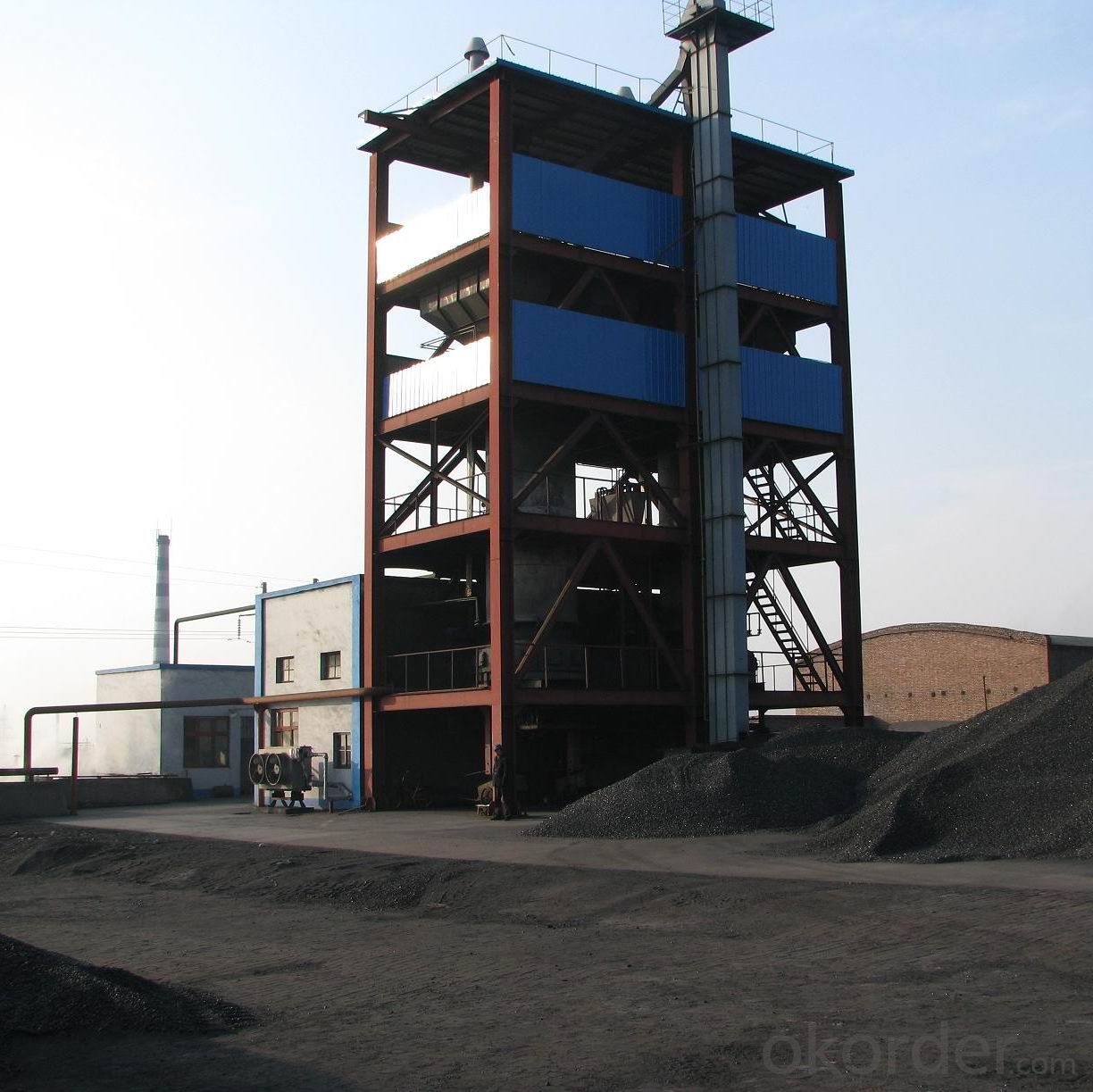
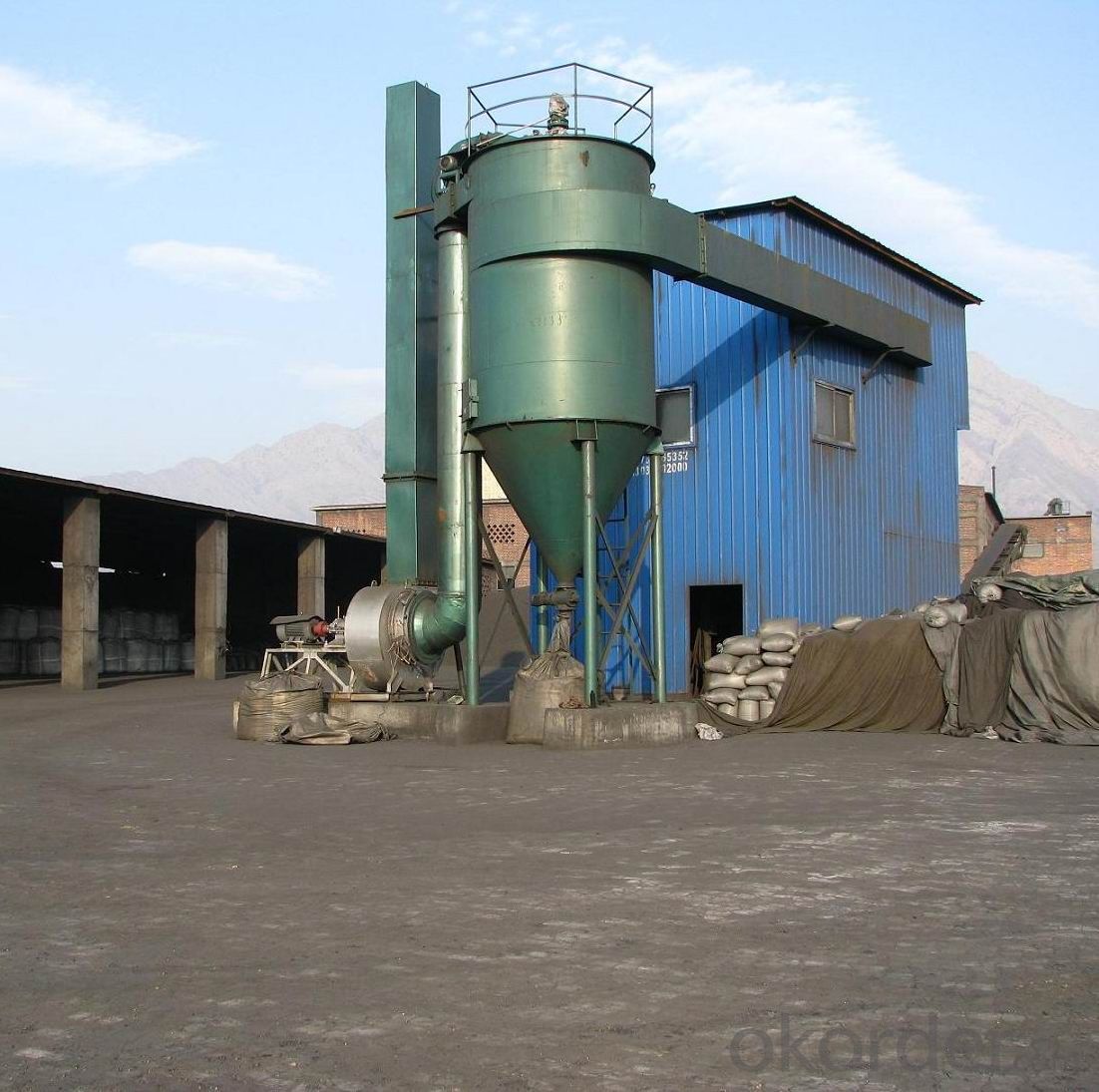
- Q: What is carbon offsetting in aviation?
- Carbon offsetting in aviation is a mechanism that aims to neutralize the carbon emissions produced by the aviation industry. As airplanes are a significant source of greenhouse gas emissions, carbon offsetting provides a way for airlines and passengers to take responsibility for their carbon footprint and contribute to the fight against climate change. The process of carbon offsetting involves calculating the amount of carbon dioxide and other greenhouse gases emitted during a flight and then investing in projects that reduce an equivalent amount of emissions elsewhere. These projects can include renewable energy initiatives, forest conservation, or methane capture projects. The idea is that the emissions reduced or removed by these projects offset the emissions produced by the aviation industry. To participate in carbon offsetting, airlines or passengers can purchase carbon offsets, which are essentially credits representing the reduction or removal of one metric ton of carbon dioxide or its equivalent. These offsets are generated by certified projects that meet strict standards and are independently verified. By investing in carbon offsets, the aviation industry can contribute to global efforts to reduce greenhouse gas emissions and mitigate the impact of air travel on climate change. It allows airlines and passengers to take immediate action to counteract the environmental consequences of flying, as the reduction or removal of emissions from offset projects helps to balance out the emissions produced by air travel. Carbon offsetting in aviation is not a means to justify or ignore the need for long-term solutions to reduce emissions from aircraft. It should be seen as a complementary measure to other strategies such as investing in more fuel-efficient aircraft, using sustainable aviation fuels, and implementing operational improvements. However, carbon offsetting does provide a valuable tool to mitigate emissions in the short term while the aviation industry works towards more sustainable practices.
- Q: What is the role of carbonation in carbonated drinks?
- The role of carbonation in carbonated drinks is to create the fizzy sensation and enhance the overall taste and mouthfeel of the beverage. It adds a refreshing and bubbly texture, making the drink more enjoyable to consume.
- Q: How does carbon dioxide affect fuel efficiency?
- Fuel efficiency in vehicles is primarily influenced by factors such as engine efficiency, weight, aerodynamics, and driving conditions. Carbon dioxide, on the other hand, is a byproduct of burning fossil fuels, commonly used as vehicle fuel. When fossil fuels are burned, carbon dioxide is released into the atmosphere, contributing to the greenhouse effect and climate change. However, it is important to note that the increased concentration of carbon dioxide in the atmosphere does not directly impact fuel efficiency. Despite this, reducing carbon dioxide emissions remains crucial for mitigating climate change and promoting a sustainable future.
- Q: What are the consequences of increased carbon emissions on coral reefs?
- Coral reefs are severely impacted by the increased emission of carbon, resulting in numerous consequences. One major effect is the occurrence of ocean acidification, which happens when excess carbon dioxide is absorbed by seawater, causing a decrease in pH levels. This acidification hampers the ability of corals to construct their calcium carbonate skeletons, making them more susceptible to erosion and breakage. Moreover, elevated levels of carbon dioxide in the atmosphere contribute to global warming, leading to the rise of ocean temperatures. Consequently, coral bleaching occurs as corals expel the symbiotic algae responsible for their vibrant colors. Without these algae, corals become stressed, lose their color, and become more vulnerable to disease and death. Additionally, increased carbon emissions contribute to alterations in ocean currents and weather patterns, resulting in more frequent and intense storms. These storms physically damage coral reefs, causing further destruction to already fragile ecosystems. The consequences of increased carbon emissions on coral reefs are profound and devastating. The decline of coral reefs not only impacts the biodiversity of the oceans but also has significant implications for human populations that rely on reefs for sustenance, income, coastal protection, and tourism. It is imperative to reduce carbon emissions and take immediate action to safeguard and preserve these invaluable ecosystems.
- Q: What is the symbol for carbon?
- The symbol for carbon is "C".
- Q: Last night to go to the supermarket to buy 5 batteries, see Toshiba carbon batteries, I finally bought the super alkaline batteries, alkaline batteries and carbon is the difference in where? What kind of battery is best for digital cameras? Thank you
- Alkaline battery discharge point, carbon battery's full name should be carbon zinc batteries (because it is the general level is the carbon rod electrode is the zinc skin), also known as zinc manganese battery, is currently the most common dry battery, it has the characteristics of low price and safe and reliable use, environmental factors based on the consideration.
- Q: What are the properties of carbon-based ceramics?
- Carbon-based ceramics, also known as carbon ceramics, are a unique class of materials with a combination of properties that make them highly desirable for various applications. These properties include: 1. High temperature resistance: Carbon-based ceramics exhibit exceptional thermal stability, allowing them to withstand extremely high temperatures without undergoing significant degradation or structural changes. This property makes them ideal for use in high-temperature environments such as aerospace components, brake systems, and heat shields. 2. Low density: Carbon ceramics are characterized by their low density, which contributes to their lightweight nature. This property is advantageous in applications where weight reduction is critical, such as in the automotive and aerospace industries, as it can enhance fuel efficiency and improve overall performance. 3. High hardness and wear resistance: Carbon-based ceramics possess exceptional hardness and wear resistance, making them highly durable and capable of withstanding abrasive forces. This property makes them suitable for use in cutting tools, bearings, and other applications where resistance to wear and erosion is required. 4. Excellent chemical resistance: Carbon ceramics are known for their excellent chemical resistance, which allows them to resist corrosion and degradation when exposed to various aggressive chemical environments. This property makes them valuable in chemical processing, semiconductor manufacturing, and other industries where resistance to chemical attack is crucial. 5. Good electrical conductivity: Unlike traditional ceramics, carbon-based ceramics exhibit good electrical conductivity due to the presence of carbon in their composition. This property makes them useful in applications that require both thermal insulation and electrical conductivity, such as heating elements, electrodes, and electronic components. 6. Tailorable properties: Carbon ceramics offer the advantage of being able to tailor their properties to specific requirements by varying the composition and processing methods. By adjusting factors such as carbon content, porosity, and microstructure, the mechanical, thermal, and electrical properties of carbon ceramics can be customized to meet specific application needs. In summary, carbon-based ceramics possess a unique combination of properties, including high temperature resistance, low density, high hardness, excellent chemical resistance, good electrical conductivity, and the ability to tailor their properties. These properties make them valuable materials in a wide range of industries, including aerospace, automotive, chemical processing, and electronics.
- Q: How does carbon impact the availability of freshwater resources?
- Carbon impacts the availability of freshwater resources through various interconnected processes. One of the major ways carbon affects freshwater availability is through climate change. The increased levels of carbon dioxide in the atmosphere, primarily due to human activities such as burning fossil fuels, contribute to global warming. This leads to changes in precipitation patterns, including altered rainfall distribution and intensity. Warmer temperatures caused by carbon emissions can increase evaporation rates and lead to more frequent and severe droughts in certain regions. This reduces the amount of water available for freshwater resources such as rivers, lakes, and reservoirs. Additionally, the changing climate can disrupt natural water cycles, affecting the recharge of groundwater aquifers, which are crucial sources of freshwater. Furthermore, carbon impacts the quality of freshwater resources. Acid rain, a result of increased carbon emissions reacting with atmospheric moisture, can acidify freshwater bodies and make them inhospitable for many aquatic organisms. This disrupts ecosystems and can lead to the loss of species that rely on freshwater resources for their survival. Another way carbon impacts freshwater availability is through its influence on land use. The conversion of forests and wetlands into agricultural or urban areas releases carbon stored in vegetation and soil. This not only contributes to carbon emissions but also reduces the capacity of natural ecosystems to retain and filter water. Forests, for example, play a vital role in maintaining the water cycle by absorbing rainfall and releasing it gradually into streams and groundwater. Deforestation disrupts this process and can lead to decreased water availability downstream. In conclusion, carbon emissions have a significant impact on the availability of freshwater resources. Through climate change, carbon alters precipitation patterns, leading to droughts and reduced water availability. It also affects the quality of freshwater through processes like acid rain. Additionally, land-use changes driven by carbon emissions can further decrease freshwater availability by disrupting natural water cycles.
- Q: What are the consequences of increased carbon emissions on human migration patterns?
- Human migration patterns are significantly affected by the increase in carbon emissions. One of the most notable outcomes is the worsening of climate change, resulting in more frequent and severe natural disasters like hurricanes, floods, and droughts. These extreme weather events can cause immense damage to communities, infrastructure, and livelihoods, compelling people to move in search of safer and more stable environments. The rise in sea levels, which is another consequence of carbon emissions, poses a substantial threat to coastal regions and island nations. As sea levels continue to climb, low-lying areas become increasingly vulnerable to flooding and coastal erosion, rendering them uninhabitable. This displacement of populations, commonly known as climate refugees, can lead to large-scale migrations, placing additional strain on resources and infrastructure in the receiving areas. Furthermore, carbon emissions contribute to shifts in temperature and precipitation patterns, which can have a profound impact on agricultural activities. Changes in growing seasons, more frequent droughts or floods, and the proliferation of pests and diseases can all negatively affect crop yields and food security. This disruption in the availability of food and resources can compel vulnerable populations to migrate in search of better livelihoods and food sources. The consequences of increased carbon emissions on human migration patterns also extend to health issues. Climate change can facilitate the spread of diseases like malaria and dengue fever, as well as exacerbate air pollution, worsening respiratory problems. These health risks can necessitate the relocation of individuals and communities to areas with better healthcare infrastructure and conditions. To sum up, the increase in carbon emissions has far-reaching effects on human migration patterns. The exacerbation of climate change, rising sea levels, disruptions to agriculture, and health risks all contribute to the displacement of populations, creating a need for individuals and communities to seek safer and more stable environments. It is crucial to address carbon emissions and mitigate climate change in order to minimize the adverse impacts on human migration and ensure a sustainable future.
- Q: I saw a cell phone in the magazine, the global release of 900, no camera, what function is F1 carbon fiber material, actually sold 40000 yuan a piece!.. Everyone said that the circulation is so small, worth so much money? Or carbon fiber material worth so much money?
- See where, in a car for example transformation kit, with super run even if the civil area shape roughly the same but the price difference, if you feel that things are expensive, natural carbon prices go up, in fact carbon species layout production process characteristics of professional strength lot, do not understand
Send your message to us
Carbon Additve Carbon Coke for Steelmaking
- Loading Port:
- Tianjin
- Payment Terms:
- TT or LC
- Min Order Qty:
- 20 m.t.
- Supply Capability:
- 10000 m.t./month
OKorder Service Pledge
OKorder Financial Service
Similar products
Hot products
Hot Searches
Related keywords
